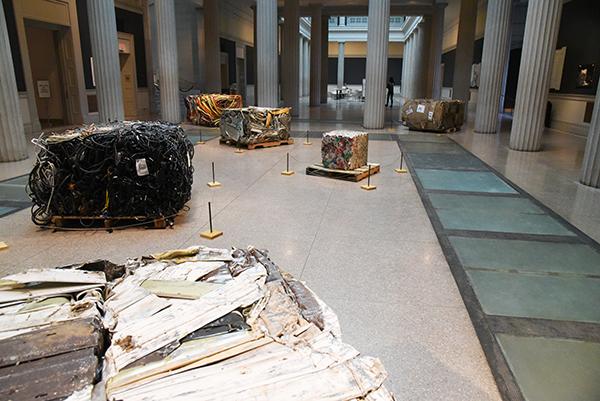Updated: Feb. 13, 2016 at 2:19 p.m.
One man’s trash is another man’s treasure, as the old adage goes.
From Feb. 5 to March 20, The Corcoran School of the Arts and Design will be showing the installment “Wildcat Hauling,” a half-art, half-activist project aimed at increasing the visibility of human waste and displaying the costs of public waste dumping in Oakland, Calif.
Timothy Furstnau, an Oakland-based artist and former part-time junk hauler, collaborated with artist and activist Andrea Steves to create the exhibition. The gallery shows the two artists removing trash from their west Oakland neighborhood.
“With ‘Wildcat Hauling’, we’re trying to recontextualize the issue of illegal dumping within larger social and environmental issues,” Furstnau said.
Furstnau said the exhibit is an effort to address inequalities in waste dumping – people dump waste in disenfranchised areas like West Oakland because the residents do not possess the political or economic power to stop them. He said only one-half of the solution is to pick up trash and the other half is to identify the causes.
“Our rule is that if you take a photo of something, then you have to take action to remediate it,” Furstnau said. “This really keeps us honest.”
While Oakland is far from D.C., Furstnau and Steves first were connected to the Corcoran when they met Sanjit Sethi, the director of the Corcoran School of the Arts and Design, while working as artists-in-residence at the Santa Fe Art Institute in 2015. Sethi was the executive director of the institute from 2013 to 2015 before coming to GW last year.
Furstnau and Steves’ work was a natural fit with the space.
“When Sethi was talking about opening up this atrium space, his vision for the space was to really focus on social and environmental issues,” Steves said.
The installment is comprised entirely of trash – compressed rectangular blocks of metal scraps, soda cans, cardboard, discarded electrical wires and water pipes stretch across the atrium of the Corcoran’s 17th Street building. Informational posters accompany each block explaining Wildcat’s attempt to encourage local haulers to pick up trash, without the extra push from developers interested in gentrifying the neighborhood.
One poster from the installation addresses a double standard: the government penalizes individuals or local businesses that dump trash illegally, but rarely take action against large waste management corporations that do the same.
Through the exhibit, Furstnau and Steves hope to shine a light on economic inequality, negative effects of waste management corporations and the government’s failure to take action against them.
“If you look at where material goes, you see that it never ends up being disposed of in pristine neighborhoods,” Steves said. “That would cause a lot of problems.”
Still, Furstnau and Steves see illegal waste dumping as both a problem and an opportunity. Furstnau said mobilizing the community in Oakland is another way to generate change.
“We’re constantly told that the only solution to public dumping is development in the neighborhood,” Furstnau said. “But in West Oakland, ‘economic development’ really means displacement of the people who are there with people who are more affluent.”







